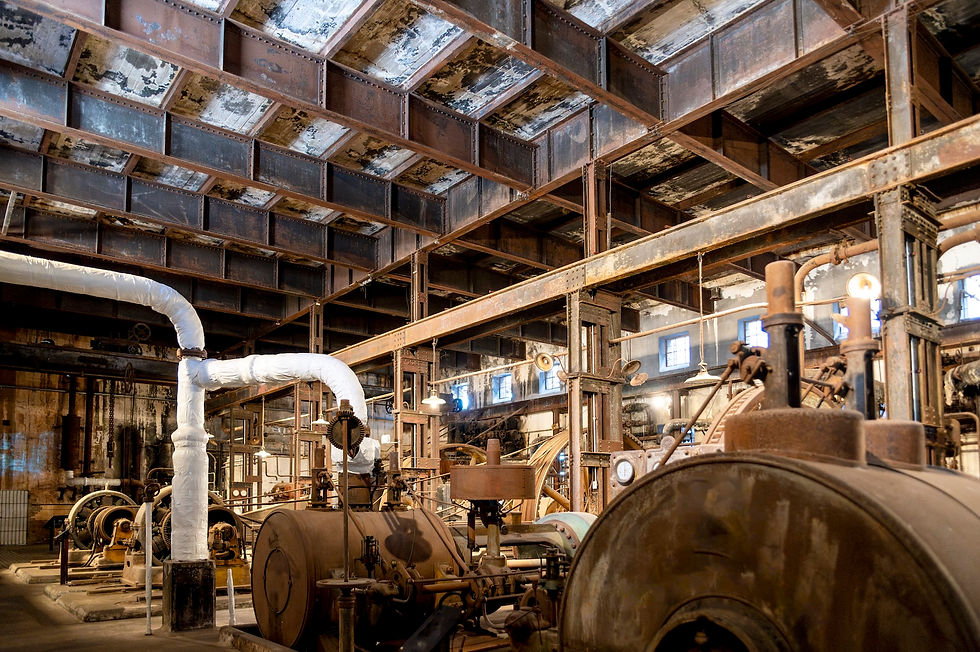Retrofitting Indoor Air Quality (IAQ) Systems for Existing Buildings: Overcoming Challenges and Implementing Solutions
- Jennifer Crowley
- Apr 9, 2024
- 3 min read
Updated: Jul 8, 2024

As the importance of indoor air quality (IAQ) continues to gain recognition, many building owners and facility managers are seeking ways to enhance IAQ in their existing structures. Retrofitting IAQ systems in older buildings presents unique challenges, but with the right strategies and solutions, it is possible to achieve significant improvements in air quality and occupant comfort.
In this blog post, we'll delve deeper into the challenges associated with retrofitting IAQ systems and explore effective solutions, including a detailed case study of a heritage building that overcame limited space, compatibility issues, and cost concerns.
Challenges of Retrofitting IAQ Systems:
Limited Space: Retrofitting IAQ systems in existing buildings often poses challenges due to limited space for new equipment and ductwork. This can make it difficult to install advanced filtration systems or ventilation upgrades without major renovations.
Compatibility Issues: Existing HVAC systems may not be compatible with modern IAQ technologies, making it challenging to integrate new components seamlessly. Compatibility issues can arise with control systems, airflow configurations, and equipment compatibility.
Cost Concerns: Retrofitting IAQ systems can be costly, especially for older buildings with outdated infrastructure. Building owners may be hesitant to invest in IAQ improvements due to budget constraints or concerns about the return on investment.
Disruption to Occupants: Retrofitting IAQ systems may require temporary disruptions to building operations, causing inconvenience to occupants and potential productivity losses. Minimizing disruption while implementing IAQ upgrades is essential to maintaining tenant satisfaction.
Solutions for Successful Retrofitting:
Comprehensive Assessment: Begin the retrofitting process with a comprehensive assessment of the existing IAQ conditions and HVAC systems. Identify areas for improvement and prioritize upgrades based on their potential impact on air quality and occupant health.
Tailored Solutions: Implement IAQ solutions that are tailored to the specific needs and challenges of each building. This may include installing high-efficiency filtration systems, upgrading ventilation equipment, or integrating air purification technologies.
Strategic Planning: Develop a strategic retrofitting plan that minimizes disruption to building occupants while maximizing the efficiency of IAQ upgrades. Coordinate with tenants and schedule work during off-peak hours to minimize inconvenience.
Investment in Technology: Leverage advanced IAQ technologies and smart building solutions to optimize air quality and energy efficiency. Investing in state-of-the-art filtration systems, sensors, and monitoring tools can provide real-time insights and ensure optimal IAQ performance.
Collaboration with Experts: Partner with IAQ experts, HVAC contractors, and building engineers to develop and implement effective retrofitting strategies. Their expertise and guidance can help you navigate complex challenges and ensure successful IAQ upgrades.

Case Study:
In a recent retrofitting project for a heritage building, Blade Air faced numerous challenges including limited space, compatibility issues, and cost concerns. However, by leveraging Blade Air filtration products designed to fit any HVAC system, conducting minor equipment upgrades, and developing a detailed plan, they overcame these hurdles. Blade Air provided assurances that the energy, maintenance, and logistical savings resulting from the IAQ upgrades would balance out the initial investment costs within two years, ultimately saving time and money for the building owner.
Retrofitting IAQ systems for existing buildings presents challenges, but with careful planning, strategic solutions, and collaboration with experts, it is possible to achieve significant improvements in indoor air quality and occupant comfort. By prioritizing IAQ initiatives and investing in modern technologies, building owners can create healthier, more productive environments for their occupants while enhancing the overall value of their properties.
Are you considering retrofitting IAQ systems in your existing building? Contact Blade Air today to learn more about our IAQ solutions and how we can help you achieve your indoor air quality goals.




















